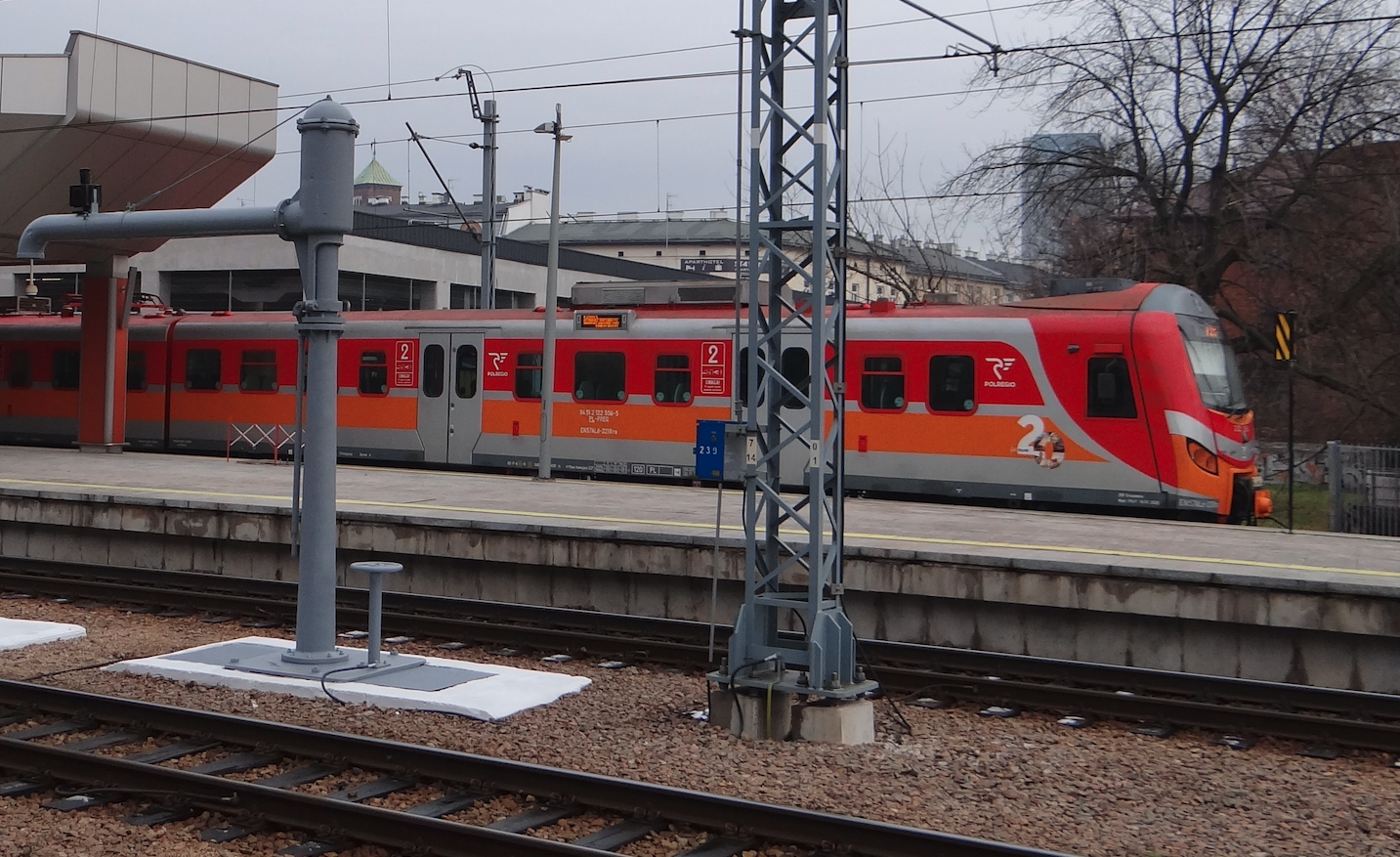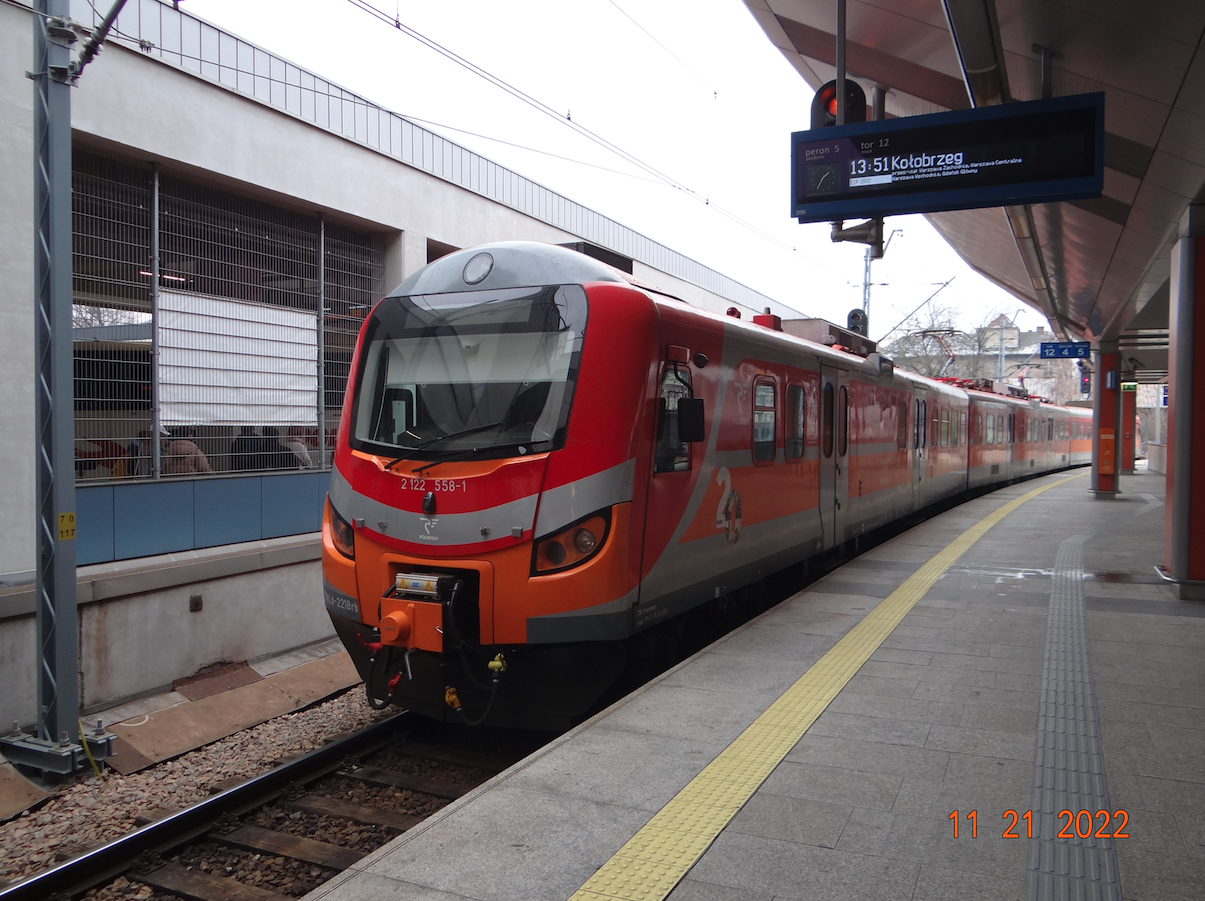Kraków 2022-11-24
EN57ALd-22xx.



In 2015, PolRegio signed a contract with the factory in Mińsk Mazowiecki, a branch of Pesa Bydgoszcz SA, for the modernization of EMU EN57. The contract covered 36 old trains, most of which were of the EN57-17xx series. The contract was divided into three tasks. 13 trains were modernized in the first task, 12 trains in the second task and 11 trains in the third task. The contract amounted to PLN 287.7 million. One train cost about PLN 8.1 million. At that time, a new train of a similar class cost about PLN 18 million.
In September 2017, PolRegio received the first 10 trains. They received numbers from EN57ALc-2201 to EN57ALd-2210. You need to know that the trains were upgraded to one of two versions; EN57ALc or EN57ALd. The trains were dubbed "Second Generation Tigers". The first trains left for routes in Wielkopolska; to Leszno, Ostrów and Jarocin. Subsequent trains went to the Podlaskie, Świętokrzyskie, Lubelskie and Warmińsko-Mazurskie Voivodships.
It should be written that it was not a modernization, but a thorough reconstruction of the warehouses. Only skeletons of boxes remained from the old wagons. The new EMUs received a new painting referring to the applause of PolRegio. The works were carried out by the ZNTK plant in Mińsk Mazowiecki, belonging to the Pesa group.
It should be written that it was not a modernization, but a thorough reconstruction of the warehouses. Only skeletons of boxes remained from the old wagons. The new EMUs received a new painting referring to the applause of PolRegio. The works were carried out by the ZNTK plant in Mińsk Mazowiecki, belonging to the Pesa group.
The trains have been modernized so that their traveling speed is not less than 120 km/h. There are 165 individual passenger seats in the train, plus 10 tilting seats. The entrance steps to the train are designed to serve platforms with a height of 0.30 m - 1.00 m from the rail head. The entrance doors are of the rebound-sliding type, which guarantees greater tightness of the wagon. The clear width of the door is 1.30 m. The passageways are equipped with glazed and electrically opened doors with a photocell. The windows are hinged, closed with a conductor's key. There are glass vestibules in the vestibules. Each car is single-spaced and there are no walls with doors between the entrance corridor and the passenger zone. The interior looks elegant, and each passenger has an individual seat. Passengers have at their disposal 230 V electric sockets and Wi-Fi access. The wagons are air-conditioned (heating, ventilation). There is a travel information system. The composition is monitored. Passengers have at their disposal tables under the windows or on the back of the previous seat. There are dustbins, shelves and clothes hangers. There are 4 spaces for bicycles and 2 spaces for wheelchairs on the train. There are also four USB charger sockets on the train. There are two toilets in each train, including one for the disabled and equipped with a changing table for babies. Vacuum toilets are a closed system, and the water from the sink flows into the intertrack, which provides a larger capacity of the tank for faeces. There are also electric hand dryers in the toilets.
Modernization of the vehicle's drive included the use of two traction inverters in IGBT technology, a microprocessor controller, which ensures energy recuperation to the traction network. The traction motors are of a new type, asynchronous, with a power of 250 kVA each. The train can be operated at external temperatures from -25 degrees Celsius to +40 degrees Celsius.
Written by Karol Placha Hetman
